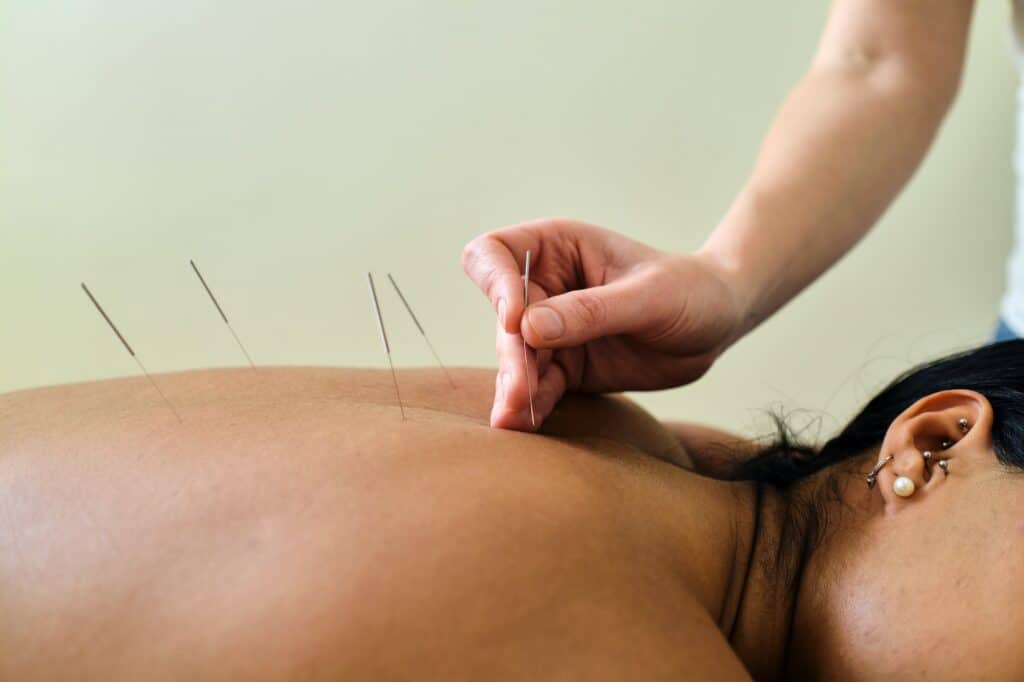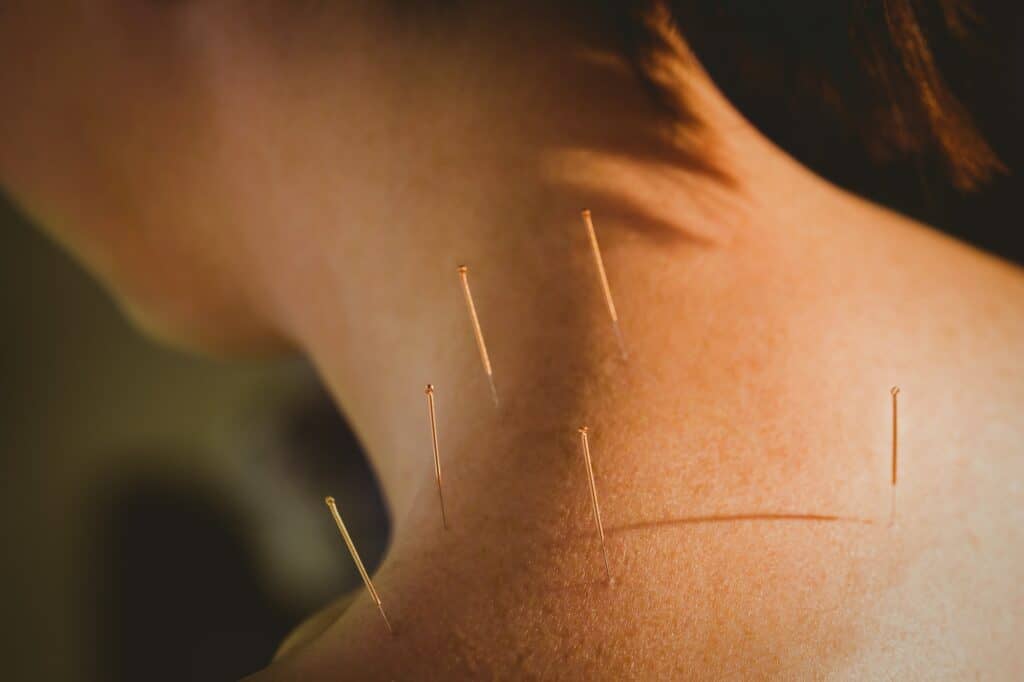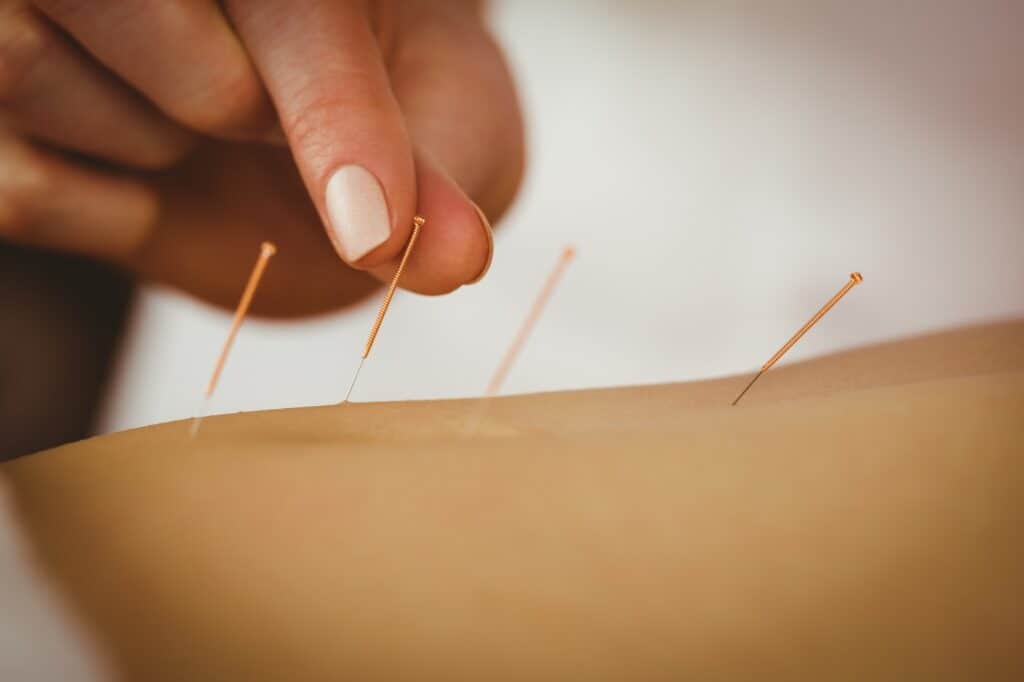How Effective Is Dry Needling For Back Pain Relief?
If you’re one of the millions who suffer from chronic back pain, you know all too well the frustration of searching for effective relief. While traditional treatments have their merits, an alternative therapy called dry needling is gaining attention for its potential to alleviate back pain. But just how effective is dry needling for back pain relief? In this blog, we’ll dive into the science, benefits, and patient experiences surrounding this technique, exploring whether it could be the solution you’ve been searching for. Get ready to discover a needle in the haystack of pain management options.
Definition of Dry Needling for Back Pain
Dry needling for back pain is a therapeutic technique that involves inserting thin, solid needles into specific trigger points in the back muscles. Unlike acupuncture, dry needling relieves pain and tension by directly targeting muscular knots and trigger points, promoting muscle relaxation and pain relief.
Understanding Dry Needling
Dry needling is a therapeutic technique rooted in Western medicine. It originated in the 1940s when Dr. Janet Travell introduced the concept of trigger points. During dry needling, fine needles are inserted into these trigger points in the back muscles, stimulating the release of tension, improving blood flow, and relieving pain and muscle spasms. Unlike acupuncture, which has Eastern origins, dry needling primarily focuses on muscular dysfunction.
Differentiating Dry Needling From Acupuncture
While both dry needling and acupuncture involve the use of thin needles, there are key differences between the two practices:
- Philosophy and Theory: Dry needling targets muscle trigger points to alleviate pain and tension, while acupuncture, rooted in Traditional Chinese Medicine, balances energy flow through meridians for overall health. Both methods aim to promote physiological responses and alleviate muscular dysfunction.
- Treatment Goals: Dry needling targets trigger points to relieve musculoskeletal pain, improve muscle function, and promote healing, while acupuncture restores balance and harmony, treating physical and emotional ailments.
- Needle Placement: Dry needling targets specific areas of muscular dysfunction, eliciting a local twitch response for therapeutic effect. In acupuncture, needle placement is determined by energetic meridians and specific conditions.
- Training and Credentialing: Dry needling is performed by qualified healthcare professionals like physical therapists, chiropractors, or medical doctors, while acupuncture is performed by licensed acupuncturists who have studied Traditional Chinese Medicine in-depth and acupuncture techniques.
The Science Behind Dry Needling For Back Pain
Dry needling for back pain has a scientific basis that helps explain its effectiveness. Here are the key scientific mechanisms behind the therapeutic technique:
- Stimulation of Neural Pathways: Thin needles in back muscles stimulate sensory nerve fibers, disrupting pain signals and releasing endorphins, promoting pain relief and triggering the release of natural pain-relieving chemicals.
- Endorphin Release and Pain Modulation: Dry needling increases endorphins, the body’s natural painkillers, reducing pain sensations and promoting relaxation, making it effective for back pain relief by stimulating needles.
- Improved Blood Circulation and Tissue Healing: Dry needling needles improve blood circulation in affected areas, bringing oxygen, nutrients, and immune cells, promoting tissue healing, reducing inflammation, and promoting muscle recovery.
- Muscle Relaxation and Release of Knots: Dry needling targets trigger points, taut muscle fibers, causing knots and tightness. Inserting needles triggers a local twitch response, relaxing and releasing tense fibers, relieving spasms, and reducing tension.

Benefits of Dry Needling for Back Pain Relief
Dry needling offers several benefits for individuals seeking relief from back pain. Here are some key advantages of incorporating dry needling into a comprehensive treatment plan:
- Targeted Pain Relief: Dry needling targets trigger points in back muscles to alleviate pain by releasing tension and reducing muscle tightness, reducing localized discomfort.
- Muscle Relaxation and Increased Flexibility: Dry needling involves needles inserted into trigger points, causing muscle relaxation, easing spasms, reducing tightness, and improving flexibility. This leads to an enhanced range of motion and reduced stiffness.
- Reduction of Inflammation and Muscle Spasms: Dry needling addresses back pain by promoting blood circulation and releasing endorphins, reducing inflammation and muscle spasms, and relieving pain.
- Potential Long-Term Benefits: Dry needling offers immediate and long-term relief for chronic back pain by targeting trigger points, addressing muscular dysfunction, breaking pain cycles, and promoting improved muscle function.
- Complementary Approach to Pain Management: Dry needling can be integrated with other treatment approaches for back pain relief. It can complement traditional therapies, such as physical or chiropractic care, by enhancing their effectiveness and providing targeted pain relief.
Safety and Risks of Dry Needling
Dry needling carries certain safety considerations and potential risks, like any medical procedure. Knowing these factors before undergoing dry needling for back pain is essential. Here are some important points to consider:
- Trained Practitioners: Dry needling should be performed by qualified healthcare professionals with proper training, such as physical therapists, chiropractors, or medical doctors, for safety and optimal results.
- Risk of Bruising or Soreness: Dry needling sessions may cause mild bruising or soreness at needle insertion sites, which usually subside within days. Applying ice or over-the-counter pain relievers can alleviate discomfort.
- Infection Risk: Proper sterilization techniques and sterile needles are crucial to prevent infection. Reputable healthcare providers follow strict hygiene protocols to minimize the risk of infections associated with the procedure.
- Individual Sensitivities: Each individual may respond differently to dry needling. Some individuals may be more sensitive or susceptible to certain effects, such as temporary muscle soreness or local twitch responses. Communicating any discomfort or concerns to the healthcare professional during the treatment session is important.
- Pre-existing Conditions: Individuals with certain health conditions, such as bleeding disorders or compromised immune systems, may need to exercise caution or avoid dry needling altogether. Discussing your medical history with the healthcare provider is important to ensure the procedure is safe.
- Potential Side Effects: While rare, there is a possibility of adverse effects such as fainting, dizziness, or temporary aggravation of symptoms. However, these side effects are generally minimal and short-lived.

Integrating Dry Needling with Other Treatment Approaches
Integrating dry needling with other treatment approaches can enhance the overall effectiveness of back pain management. Here are some ways in which dry needling can be combined with complementary therapies:
- Physical Therapy: Dry needling can be integrated into a back pain treatment program, addressing muscular imbalances, releasing trigger points, and improving muscle function. This combined approach leads to better pain relief, increased mobility, and improved functional outcomes.
- Chiropractic Care: Chiropractic practitioners use spinal adjustments, soft tissue techniques, and therapeutic exercises to alleviate back pain. Dry needling targets trigger points and promote muscle relaxation, relieving pain and improving spinal alignment.
- Massage Therapy: Dry needling complements massage therapy for back pain by addressing trigger points and releasing tension in specific muscle groups, providing a comprehensive, targeted approach to pain relief.
- Exercise and Rehabilitation Programs: Dry needling in exercise and rehabilitation programs aids back pain recovery, strength regain, and muscle tightness reduction, enabling therapeutic exercises with improved comfort and range of motion.
- Collaborative Care Models: Healthcare professionals collaborate to create a holistic treatment plan for back pain, incorporating dry needling and other therapies for comprehensive, personalized care.
Limitations and Considerations
While dry needling can be an effective treatment option for back pain, it is important to understand its limitations and consider certain factors:
- Not a Standalone Treatment: Dry needling is typically part of a comprehensive treatment plan for back pain. It should not be solely relied upon as the sole treatment modality. Combining dry needling with other therapies, such as physical therapy, exercise, and lifestyle modifications, can yield better results.
- Individual Responses May Vary: Each individual may respond differently to dry needling. While many people experience positive outcomes, others may find it less effective. Factors such as the severity and underlying cause of the back pain, individual pain tolerance, and overall health can influence the response to treatment.
- Comprehensive Assessment Required: Healthcare professionals administer dry needling through a thorough assessment, determining suitability, identifying contraindications, and tailoring treatment plans to individual needs.
- Need for Skilled Practitioners: The expertise and experience of the practitioner performing dry needling are critical for both safety and effectiveness. Ensure the healthcare professional administering the treatment has undergone proper training and certification in dry needling techniques.
- Tailored Treatment Plans: Dry needling alone may not effectively treat all back pain conditions. Consult healthcare professionals for a customized treatment plan tailored to your condition and goals.
- Temporary Discomfort: It is common to experience temporary discomfort following a dry needling session, such as muscle soreness or bruising. However, these effects are usually mild and subside within a few days. Discuss any concerns or discomfort with your healthcare provider.
How Dry Needling Targets Specific Trigger Points in the Back Muscles
Dry needling is a technique that specifically targets trigger points in the back muscles to alleviate pain and tension. Here’s how dry needling effectively addresses these trigger points:
- Identification of Trigger Points: Skilled healthcare professionals, such as physical therapists or chiropractors, identify trigger points by palpating the affected muscles. These trigger points are localized areas of hypersensitivity within the muscle, often associated with taut bands or knots.
- Needle Insertion: Thin, solid needles are inserted directly into these specific areas once the trigger points are identified. The needles used in dry needling are typically much finer than those used for injections, minimizing discomfort during the procedure.
- Local Twitch Response: Inserting the needle into the trigger point can trigger a local twitch response. This is an involuntary, brief contraction of the muscle fibers around the needle. The twitch response helps the tight muscle fibers relax and release tension within the trigger point.
- Muscle Relaxation and Pain Relief: The local twitch response induced by dry needling promotes muscle relaxation and improved blood circulation in the targeted area. This can help reduce muscle spasms, alleviate pain, and enhance overall muscle function.
- Neuromuscular Effects: Dry needling also affects the nervous system. The insertion of the needle stimulates sensory nerve fibers in the muscles, causing a release of natural pain-relieving substances such as endorphins. This helps modulate pain signals and provides additional pain relief.
In conclusion, dry needling has emerged as a promising therapy for back pain relief, targeting trigger points and promoting muscle relaxation. While it offers several benefits, it should be integrated into a comprehensive treatment plan. Consulting with qualified healthcare professionals is crucial for personalized guidance. To learn more about how dry needling can help you, contact us today at 858-673-4400 or info@activemedhealth.com. Take the first step towards finding relief from your back pain.



